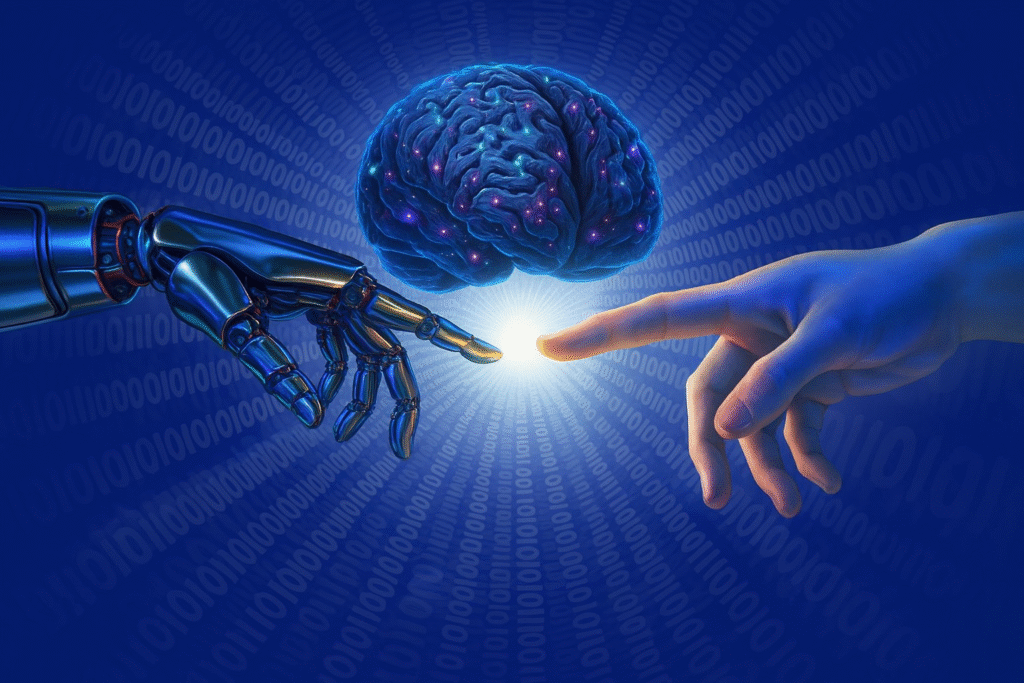The process of hiring in 2025 is far different leaving aside its equation to n recruitment. An overwhelming number of applicants for entry space job positions often, hiring of superior talent is more challenging because of the increasing competition, and the candidates expectations that they be treated as equals with regard to experience and communication, which are also growing. In this way, the recruitment team is compelled to work with the limited damage they have. This is where free ai tools for recruitment come into play: they help streamline many repetitive, time-consuming tasks while helping enhance candidate sourcing, screening, engagement, and employer branding, all without breaking the budget.
Free AI tools are like their paid counterparts as they also have functions such as job description generator features, resume screening, candidate outreach, workflow automation, and applicant tracking system (ATS) compatibility. Thus, even the smaller HR teams or startups can make use of the new HR technology innovations. In this article, we’ll explore several of the top free or freemium tools available now, and how they can be integrated into your hiring process to optimize talent acquisition, reduce bias, improve candidate experience, and speed up hiring.
Top Free AI Tools for Recruitment
Below are some promising tools — some strictly free, others freemium — that are helping recruiters transform their hiring processes through automation, candidate screening, and recruitment analytics.
18 free recruiting tools no one told you about (Until now!) 🤫
ClearCompany’s AI Job Description Generator
ClearCompany offers a free AI-assisted job description generator as part of its suite of HR tools.
What it does: You enter the industry or role, optionally set tone (formal or friendly) and the tool produces a well-structured job description. It also helps ensure inclusivity and readability, avoiding biased language.
Main characteristics: Elevates job ad quality, assists job ad optimization through well-selected keywords, accelerates writing job descriptions, guarantees uniform style. It enables recruiters to generate job descriptions that are in accordance with their applicant tracking system and candidate expectations.This is an example of job ad optimization AI in practice.
Limitations: Because it’s a free tool, customization beyond what’s offered (e.g. highly specific role architecture, niche skills, or very unusual tone/culture needs) may still require manual editing. Also, free tools may produce generic outputs that need refinement.
Avado Learning’s JD Drafter
Avado Learning provides a tool called JD Drafter in its AI HR Toolkit.
What it does: You input job title, experience level, required skills, and the tool generates a tailored job description in seconds.
Other tools in Avado’s suite: Policy Proofer, AI Skills Planner, Survey Creator, etc. — so while the JD Drafter is specifically for job description generation, the toolkit supports broader HR tasks.
Strengths: Very fast, helps standardize the hiring process, supports hiring managers who may not be experienced writers. Improves consistency across roles.

Wayy’s Free AI Recruiting Tools
Wayy offers a broad set of 100% free recruiting-oriented AI tools.
What they cover: Writing job descriptions and job ads, screening & comparing resumes, preparing interview questions, creating candidate profiles, doing Boolean search builders, calculating match scores between candidate resumes and job descriptions, improving job descriptions, creating candidate outreach messages, etc.
Example: You can upload a job description and candidate resume to get a match score with detailed analysis. Also tools to improve an existing job description to attract more qualified applicants.
Benefits: Very flexible for different hiring tasks, good for small teams or those lacking full recruitment infrastructure, helps with candidate experience optimization and talent acquisition via more precise sourcing and screening.
AIResumeScan
AIResumeScan is a freemium/resume-help tool, useful especially for resume screening & matching tasks.
How it functions: It checks for ATS compatibility, keyword matches, and formatting issues on the resumes and also provides suggestions to increase the chances of the resumes to go through both automated (ATS / AI screening) systems and human reviewers.
Recruiters use case: Give applicants the option to process their resumes using this or use it yourself to assess resumes before passing them to hiring managers helps with ranking tools and minimizes wasted time on poor applications.
Strengths: Very helpful in de-risking misaligned resumes, improving job match, optimizing resumes so they don’t get filtered out early.
RecruitBot
RecruitBot is a more full-featured platform. It may have free trial periods rather than completely free plans for all features, but it represents a valuable example of what’s possible when AI-powered hiring is applied to candidate sourcing and engagement.
What it does: Uses a large database of candidate profiles, allows advanced candidate search with filters (including DEI attributes), automates personalized outreach (email drip campaigns), helps with candidate matching, analytics, and optimizing outreach.
How “free” / trial works: There is a free trial for many of the features.
Benefits: Great for filling pipelines, boosting candidate engagement, reducing time-to-fill significantly, helping with recruitment automation, allowing recruiters to scale sourcing.
Benefits of Using AI in Recruitment
Hiring Process Optimization & Efficiency
AI recruitment tools are an easy and wonderful way to automate all the tiring and never-ending tasks associated with the job, including job description writing, resume parsing, matching, interview scheduling and even workflow automation in recruiting. It cuts the administrative overload on the HR teams and thus reduces the needed time to hire.
Improved Candidate Screening & Ranking
Resume screening tools, applicant tracking systems, and AI resume parser tools can automatically identify resumes that match well to a job description (skills, experience, etc.). Candidate ranking tools help focus effort on the most promising applicants.
Better Candidate Engagement
Automated outreach, drip campaigns, chatbots, personalized communication, follow-ups — all ensure candidates feel heard, engaged, and less likely to drop out. Candidate experience optimization becomes feasible even in high-volume hiring.
Consistency, Standardization & Bias Reduction
Tools like job description generators help maintain consistent tone, structure, and reduce biased or exclusionary language. Workflow automation ensures that steps are less dependent on individual human variation. Some tools include bias detection AI or DEI filters in candidate sourcing.
Cost Savings
Free tools or freemium versions reduce or eliminate software licensing costs. Also, by reducing time and manual effort, they indirectly reduce cost per hire.
Enhanced Data & Analytics
The majority of free AI tools offer recruitment analytics, such as resume volume, match scores, outreach response rates, and pipeline progress. These metrics strengthen decision-making in recruitment software and help fine-tune the overall strategy.
Agility and Ease of Adoption
When the demand for hiring increases, AI tools help with the scaling of personnel capacity. Even in the case where the tools are limited in usage, teams can combine the different tools or subscribe to freemium/paid plans only when absolutely necessary, thereby growing without the need to reinvent processes.
Enhanced Job Ad and Talent Acquisition Strategy
AI-backed job posting content gets easy accessibility, the most attractive, and better compatibility with SEO and with candidate expectations. The results from the tools assist in shaping the talent acquisition strategy, while also the predictive hiring insights might point to the right candidates to be sourced.

How to Integrate AI Tools into Your Hiring Process
Map Out Your Workflow and Pain Points
Before adopting tools, identify where your process slows down: Is it composing job ads? Screening resumes? Scheduling interviews? Candidate outreach? Once you know the bottlenecks, pick tools that address those specifically.
Select Tools That Integrate with Your Existing Stack
If you already use an ATS, HRIS, or scheduling tools, choose AI tools that can connect or at least export/import easily. Integration helps avoid duplicate work and ensures data consistency.
Test with a Pilot or Small Role
Try new tools on one or two roles first — monitor time saved, candidate feedback, candidate quality. This lets you assess impact without risking your whole hiring pipeline.
Ensure Compliance, Privacy & Ethical Use
Respect GDPR and other privacy laws with tools that emphasize compliant data handling.
Train Your Team
HR and recruiting staff need to understand what the AI tools do, their limitations, how to interpret match scores, candidate rankings, etc. Also understand that AI supports, not replaces, human judgment.
Customize Outputs & Add Human Touch
Even the best free AI tools generate generic content sometimes. Always refine job descriptions, outreach messages, interview questions to reflect your company culture, values, and what distinguishes you.
Measure and Evaluate Critical Metrics
The essential elements to track are: the duration of the recruitment process, the hiring quality (performance or retention), candidate experience (surveys), the email response rates on outreach, the number of resumes filtered versus the resumes progressed, and diversity figures. Apply recruitment analytics instruments to figure out the effective measures.
Blend Automation with Human Interaction
Automate what you can (screening, matching, scheduling), but keep human interaction where it matters (interviews, culture fit assessment, final decisions, feedback). The way the candidates are treated which includes the warmth of the people they meet and how quick their responses are, is the deciding factor.

Recap
The recruitment landscape is evolving fast. For organizations that want to stay competitive in talent acquisition while managing budgets, free ai tools for recruitment offer powerful ways to streamline workflows, improve candidate sourcing, screening, and engagement, and enhance hiring process optimization. Tools like those described — job description generators, resume parsing,job match AI,recruiting chatbot systems, interview scoring AI, and diversity hiring tools,matching tools, candidate outreach automation, and recruitment analytics platforms — provide a mix of capabilities that cover many facets of recruiting: from job description writing, to candidate ranking tools, interview scheduling, candidate sourcing, video interview tools, culture fit assessment, and bias detection AI.
However, it’s crucial to use these tools intelligently: know your process, pick tools that integrate well, ensure ethical and compliant use, customize outputs, and always retain human oversight. If implemented properly, these AI recruitment tools can reduce hiring time, improve candidate experience, reduce bias, and ultimately help you attract and retain better talent — all without stretching the budget.






